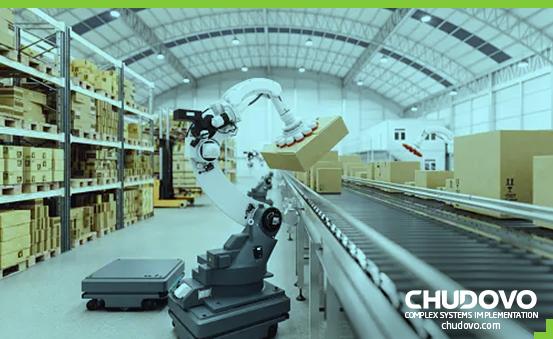The Future of Logistics: Embracing Digital Transformation in Supply Chain Management
Logistics and supply chain management are two important components of any business. They are responsible for the timely and efficient delivery of products or services to customers. Most often, supply chains are used to provide goods. Services are rarer and often do not have as much demand in this industry.
Logistics refers to the planning process. This includes the organization of the work of deliveries, both to the warehouse and to the buyer. It is logistics that should ensure trouble-free delivery, so as not to spend a lot of money on transit.
On the other hand, supply chain management includes the coordination and management of all activities related to the sourcing, procurement, and production of goods and services. The supply chain should organize the work of the company “behind the screen”. Although this part of the work is hidden from the eyes of buyers, companies still need to pay great attention. Therefore, it depends on the supply, how quickly users can place orders, and what profit there will be.
The impact of digital transformation in logistics cannot be overestimated. With the increasing use of technology in modern business, logistics, and supply chain management are no exception. Digital transformation can help companies streamline their operations, cut costs, and improve customer service. This text contains additional information on how buying and selling can change due to digital transformation. You can also get an answer to the question of what is supply chain management in digital transformation and why you should resort to it.
Table of contents:
- What Is Digital Transformation in Supply Chain Management?
- Challenges faced by traditional logistics
- Benefits digital transformation in supply chain management
- Application of Digital Transformation in Supply Chain Management
- Examples of Global Companies in Digital Transformation in Supply Chain Management
- Pros and Cons Digital Transformation in Supply Chain Management
- Perspectives of Using Digital Transformation
- Conclusion
- FAQ: The Future of Logistics

What Is Digital Transformation in Supply Chain Management?
Digital transformation in supply chain management is the use of digital technologies to increase the efficiency and flexibility of operations in supply chains. This may include artificial intelligence, big data analytics, and the Internet of Things (IoT). This is necessary to provide improved performance at all stages of work.
Digital transformation enables the company to improve and change positively at all stages of service delivery. This can be done because all the data will be in one place, which in turn allows not only to organize work more efficiently but to quickly respond to troubles.
Some key benefits of digital transformation in supply chain management include:
- Digital solutions enable companies to gain real-time insight into their supply chain operations, allowing them to better manage inventory, track shipments and monitor supplier performance.
- It also facilitates collaboration between various stakeholders in the supply chain, including suppliers, manufacturers, distributors, and customers.
- Digital solutions enable companies to quickly respond to changing market conditions, customer requirements, and supply chain disruptions, helping them stay ahead of the competition.
One of the following sections will discuss all the advantages that can be obtained by using new technologies. You can learn more about these advantages there.
Challenges faced by traditional logistics
Services to manage are becoming more and more popular and classical management is fading into the background. Traditional logistics processes face several challenges that can hinder their ability to keep up with the demands and expectations of today’s business landscape. These challenges include:
- Manual and paper-based processes make it difficult to obtain real-time information about supply chain operations, leading to a lack of transparency that can make it difficult for companies to track shipments, manage inventory, and monitor suppliers. This can result in corruption or misconduct by warehouse employees or suppliers.
- Limited collaboration between various stakeholders in the supply chain can lead to inefficiencies, as each stakeholder may be working towards their own goals rather than the overall goal of improving the entire supply chain.
- Inefficiency is one of the biggest problems, as it causes a decrease in profits. These inefficiencies can be exacerbated by the lack of transparency and limited collaboration mentioned above, making it difficult to identify and address inefficiencies in the supply chain.
- Often, the supply chain is manual and has limited ability to quickly respond to changing market conditions, customer requirements, or disruptions in the supply chain. This inflexibility can lead to missed opportunities or increased costs because technological advances do not impact the team, causing opportunities to be lost.
Overall, these challenges highlight the need for digital transformation in supply chain management. By leveraging digital technologies and solutions, companies can overcome these challenges and improve their supply chain operations, including increasing transparency, enhancing collaboration, reducing inefficiencies, and increasing flexibility.
Benefits digital transformation in supply chain management
To appreciate the advantages digital transformation in supply chain management in comparison with classical, you need to understand what are the advantages of digital transformation in supply chain management. It is dry facts that will help you understand why more and more companies are bringing new IT technologies into their work. Namely, it is about:
- Improved visibility into supply chain operations to better manage inventory, track shipments, and monitor suppliers and workers.
- Improved communication at every stage of the sale of goods, from suppliers and distributors to buyers and delivery.
- Increased flexibility and ability to respond to changing market conditions and customer feedback.
- Reduce costs through automation, optimization, and making decisions.
- Increased efficiency, because all data is in one place, and you can quickly respond to different events.
- Improved customer experience through faster order fulfillment and merchant transparency.

Application of Digital Transformation in Supply Chain Management
Real use cases will not only provide information in a more visualized way but will make it clear that digital transformation is not only about the future. These technologies are already in use and have helped the company to simplify the work. The use of new IT technologies not only allows you to organize your work more efficiently but also makes it more transparent. All the technologies that will be presented below allow you to optimize work and minimize the chance of errors. An example is Golden State Foods (GSF), which uses IoT technologies in their work that allows them to control the storage process, as well as transfer information to restaurants with the help of the blockchain. As a result, the company was able to minimize the amount of food waste that could occur with improper storage.
Predictive analytics
Predictive analytics is a technology that is used to determine the likelihood of future outcomes based on historical data. Predictive analytics can be used to predict demand and optimize inventory levels, reducing the risk of stockouts or overstocking. This will allow more rational spending of the budget, which will increase profitability. By analyzing data, predictive analytics can identify trends and patterns that may not be obvious to analysts. Such a solution to streamline procurement and data analysis will be the most optimal.
Blockchain
Blockchain technology is an analog of a digital ledger that ensures data security. If we consider the blockchain in the context of the topic, then it can be used to increase the transparency of the work of employees and track the entire process of selling goods, starting with the purchase. This technology provides secure access to all information, including transaction and bank account numbers. This can increase trust between all parties in the buying and selling process. The use of blockchain technology in supply chain management is still new, but its potential benefits are clear, and it is expected to play a significant role in transforming supply chain operations in the coming years.
Autonomous vehicles
Autonomous vehicles such as self-driving trucks or drones are prime examples of how companies are using digital technologies for logistics transformation. According to a McKinsey study, autonomous vehicles can reduce delivery costs within a city by up to 40%. In addition to cost savings, they can also help reduce shipping times and reduce the risk of goods being damaged in transit.
Although, the use of autonomous vehicles is still relatively new. Therefore, some problems may arise, as it is associated with issues of regulation of this technology by legislation and road safety problems. But these issues are rather regional features. More and more companies are using this transformation in supply method, due to its low cost and potential long-term use.
Robotics
Robotic technology is rapidly evolving and becoming more and more in demand in supply chain management. The use of robots in warehouses can automate picking and packaging. As a result, it will reduce the number of errors and increase efficiency. Using robots to speed order picking will help increase turnover and allow users to receive products with less chance of packaging errors.
In addition, the use of robotic packing systems can help companies overcome traditional logistical challenges, such as inflexibility or lack of transparency on the part of employees. Also, robots will be able to perform potentially dangerous actions, which in turn will reduce the chances of injury to workers. Furthermore, the work can not only speed up the whole process, but I can potentially replace or at least reduce the number of people on the team. This in turn will reduce the cost of the product.
Internet of Things (IoT)
The Internet of Things (IoT) is a rapidly growing network of physical devices and sensors that are in a single system and exchange information through a database. In the context of supply chain management, IoT can be used to track the status and availability of products in real-time. This allows you to understand how many goods are in stock and what quality they are. This will streamline the procurement process. So if IoT and cloud are together, then all employees will be able to receive up-to-date information about goods and manage it at different stages of the sale.
According to research, IoT can help companies reduce supply chain costs by up to 20-30% through better inventory management and supply chain visibility. In addition, you can use IoT for quality communications, there are many wearable devices and a single system that connects them all will help reduce the number of misunderstandings in the company or various mistakes.
AI
Artificial intelligence (AI) is another digital technology that is increasingly used in supply chain management. AI can be used to analyze data from various sources in the supply chain. For example, this could be IoT sensors, social networks, and customer reviews, to identify patterns and insights that can help in making decisions. AI can be used to predict demand and optimize inventory levels, reducing the risk of stockouts or overstocking. In addition, AI can be used to automate tasks such as quality control, error reduction, and efficiency gains. By using AI in supply chain management, companies can gain a competitive edge, improve customer satisfaction, and drive growth and profitability.
Examples of Global Companies in Digital Transformation in Supply Chain Management
To evaluate the use of digital transformation in reality, you can look at global companies that are successfully introducing new technologies into their work. That is why it is important to know the digital transformation stories of each brand. Most of them are just starting to use a variety of functions, but you can already see that there is a trend. This in turn shows that the use of digital technologies in their work is not only safe but also very effective.
Walmart
One of the largest retailers has decided to implement a blockchain-based system to improve the transparency and traceability of its supply chain. The system allows Walmart to track products from the manufacturer to the store, reducing the risk of fraud or counterfeiting, thereby improving product quality and safety.
Amazon
The e-commerce giant is investing heavily in robotics technology. This allows them to automate warehouses and improve the delivery of goods. Amazon currently uses over 200,000 robots in its fulfillment centers, reducing the number of errors during order fulfillment.
UPS
A logistics company has implemented predictive analytics and artificial intelligence to optimize delivery routes. These technologies have helped UPS save millions of dollars in fuel costs every year.
Nestle
The company has implemented blockchain technology to improve the transparency and traceability of its supply chain. Nestlé uses blockchain to trace the origin of its coffee beans, allowing it to ensure that these beans have been ethically sourced and produced. Also, all data is safe, so the company does not worry about the fact that its confidential information can be found.
Maersk
The shipping company has implemented blockchain technology to improve transparency and operational efficiency. Maersk’s blockchain platform, TradeLens, provides a secure and tamper-proof record of all transactions made in the supply chain. This increases trust between stakeholders and reduces the risk of errors or fraud.
Coca-Cola
The company has implemented IoT technology to improve operational transparency and optimize its distribution network. It uses IoT sensors to track inventory levels and monitor equipment performance. Coca-Cola can better manage its production and distribution processes, reducing waste and increasing efficiency. In addition, Coca-Cola uses predictive analytics to predict demand and optimize inventory levels, reducing the risk of stockouts or overstocking.

Pros and Cons Digital Transformation in Supply Chain Management
To make a final decision on the introduction of new technologies into your work (for example, a platform for procurement, order tracking, logistics, warehouse management, etc.), you need to understand how potential problems or troubles may arise during the transition to more modern systems. And also evaluate how many advantages there are compared to disadvantages.
| Pros | Cons |
| Improved transaction transparency | High initial investment costs |
| Increasing cooperation between stakeholders | Significant changes and additional training |
| Increased flexibility and ability to respond to market conditions | Long learning process possible |
| Scaling your business is no problem | |
| Increase efficiency and reduce costs | |
| Improved customer experience | |
| Analysis for smarter business management |
As you can see, there are many more advantages than disadvantages. each company has the right to decide how it wants to run a business, but there are already opportunities that make it possible to develop a business more efficiently. There are many prospects in the use of digital transformation, and because of this, many more companies are beginning to implement transformation on supply services in their work.

Certified engineers
Convenient rates
Fast start
Profitable conditions
Agreement with
EU company
English and German
speaking engineers
Perspectives of Using Digital Transformation
Companies can use new technologies in different ways, which is why there are many prospects for use.
- Digital transformation enables companies to gain real-time insight into their supply chain operations. This allows them to identify potential bottlenecks, mitigate risk, and respond quickly to changing market conditions. It can also help improve the overall customer experience, increase work efficiency, and reduce costs. That is, one of the prospects is precisely the improvement of supply operations.
- This can improve collaboration between stakeholders in the supply chain, including suppliers, manufacturers, distributors, and customers. Transparency has a positive effect on organizing work only in a way that will be reliable and efficient.
- It can also help companies overcome traditional logistical challenges. For example, path inefficiency, delivery delays, or missing items. Ultimately, there will be overall supply efficiency.
- Digital transformation can speed up warehouse work with new technologies such as robots, which can complete tasks quicker and without endangering human workers. Tracking goods in stock and ensuring their quality can also be improved with IoT technologies. This can guarantee the quality of products delivered to customers.
Also, read the article about how to build a modern logistics management platform.
Conclusion
It can be assumed that the constantly changing and developing digital technology market will introduce many more technologies that will greatly simplify work in the future. Technologies already exist that can not only replace people but also make work safer. In turn, distributors of goods receive not only a more efficient work process but also greater trust from suppliers and buyers. Many large companies are already using technologies that simplify the analysis of the data they receive. Additionally, artificial intelligence-based technologies can not only analyze received data but also suggest the best steps to improve work. This allows analysts and managers to make more rational decisions, which positively affects business development. Traditional methods of organizing work are becoming obsolete and less effective. That is why businesses should introduce digital technologies that can greatly simplify their operations!
FAQ: The Future of Logistics
In this section, you can find out about the most asked questions and get answers to them. This section will help you summarize the information and get rid of doubts about using a smarter supply chain.
What are logistics and supply chain management?
Logistics is part of the planning, implementation, and control of the movement of goods from the point of production to the point of consumption (purchase). Supply chain management is the coordination of all activities related to the production and delivery of products to customers.
Why is digital transformation necessary in logistics?
Digital transformation in logistics can improve efficiency, reduce costs and increase customer satisfaction. You can also gain control over supply tracking, better inventory management, and other important aspects of the supply chain. It is the use of digital technologies that can significantly speed up and simplify the work.
What challenges do traditional logistics face?
Traditional logistics face challenges such as inefficient processes, lack of transparency, and high costs associated with processes and paperwork. All these problems can be avoided using digital supply chain 4.0.
What benefits does digital transformation offer in supply chain management?
Digital transformation can improve efficiency, reduce costs, and increase the visibility and transparency of the entire supply chain. It can also improve collaboration between suppliers, manufacturers, and customers. This allows you to increase profits, due to the ease of use and transparency of the data.
At Chudovo, we deliver a high-end AI-powered solution of any scope and complexity for your business or custom needs. Contact us now and start integrating some of the AI use cases and applications for your logistics and supply chain business!



